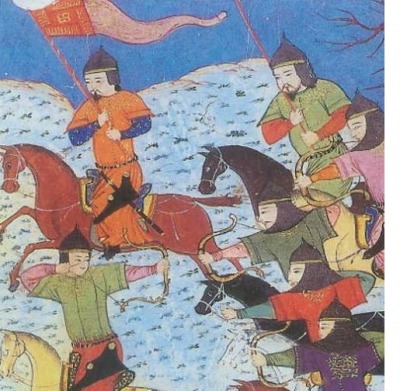 The project seeks to explain why, how, when and to where people, ideas and artifacts moved in Mongol Eurasia, and what were the outcomes of these huge movements.
The project seeks to explain why, how, when and to where people, ideas and artifacts moved in Mongol Eurasia, and what were the outcomes of these huge movements.
Studying the Mongol Empire in its full Eurasian context, the project combines a world history perspective with close reading in a huge array of primary sources in various languages (mainly Persian, Arabic and Chinese) and different historiographical traditions, and classifies the acquired information into a sophisticated prosopographical database (http://micro5.mscc.huji.ac.il:81/JPP/casia/login.jsp ),which records the individuals acting under Mongol rule in the 13th and 14th centuries. On the basis of this unique corpus, the project maps and analyzes mobility patterns, and the far-reaching effects that this mobility generated. More specifically, it aims:
(a) to analyze modes of migrations in Mongol Eurasia: why, how, when and into where people- along with their ideas and artifacts - moved across Eurasia, portraying the full spectrum of such populations movements from the coerced to the voluntary.
(b) to shed light on the economic and cultural exchange that this mobility engendered, with a stress on the religious, scientific and commercial networks both within and beyond the empire‘s frontiers.
(c) to reconstruct the new elite of the empire by scrutinizing the personnel of key Mongolian institutions, such as the guard, the judicial and postal systems, the diplomatic corps, and the local administration.
These issues will be studied comparatively, in the period of the united Mongol empire (1206-1260) and across its four successor khanates that centered at China, Iran, Central Asia and Russia.
The project is led by Professor Michal Biran of the Hebrew University and conducted by an international team of young scholars working in Jerusalem.
The project's results will be a quantum leap forward in our understanding of the Mongol empire and its impact on world history, and a major contribution to the theoretical study of pre-modern migrations, cross-cultural contacts, nomad-sedentary relations and comparative study of empires. Moreover, the re-conceptualization of the economic and cultural exchange in Mongol Eurasia will lead to a reevaluation of a crucial stage in world history that begins with the Mongol period: the transition from the Middle Ages to the early modern era.

